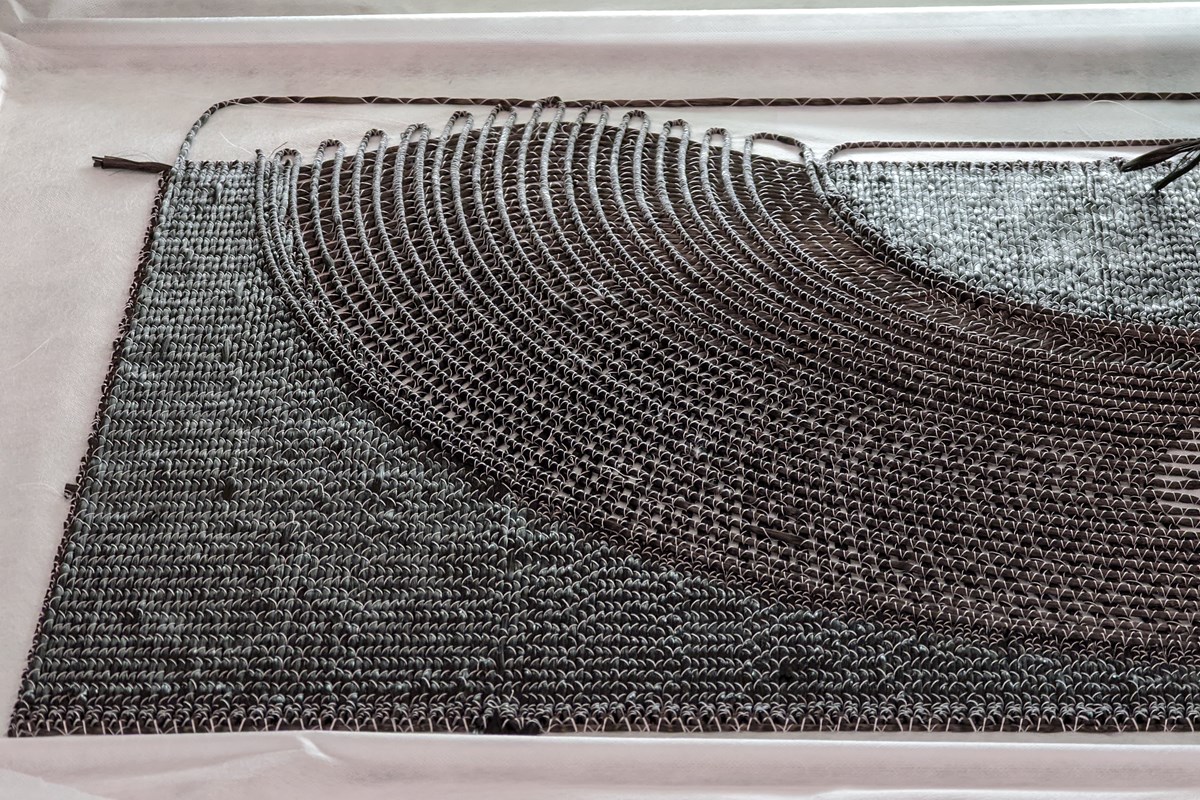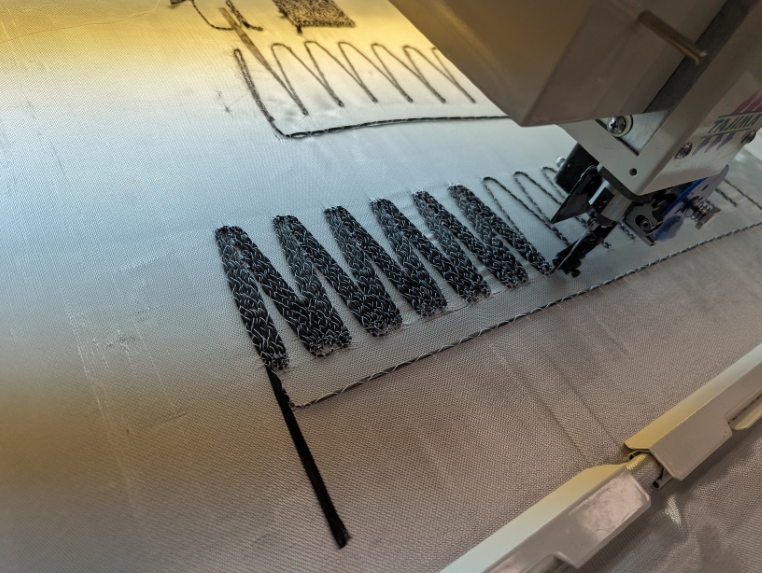
Carbon ThreeSixty: Innovative preforming with the potential to improve production rates, and significantly reduce material waste
Innovations in TFP could create a near-net shape manufacture that leads to a 95% reduction in material waste.
Our latest cell has been created in partnership with Electroimpact (Flintshire, UK) is a uniquely designed capability that combines both AFP and ATL in a single system. The dual system can be used individually or together to collaborate and create large, complex structures with minimal downtime. The robot is intended for medium to large scale manufacturing with high performance and accuracy robotic motion platform.
The Automated Fibre Placement (AFP) process head utilises x 8 tows, each measuring 12.7mm wide, with either an infrared heater to manufacture thermoset composites, or the novel Humm3 flash lamp heater by Heraeus Noblelight (Cambridge, UK) to manufacture thermosets at low temperatures (30-60 degree) and high temperature thermoplastics or bindered dry fibre (100-300 degree).
The Automated Tape Layup (ATL) head can deposit tapes of 75, 200 or 300mm widths using the same heating systems and material processing capability as AFP. Vertical and horizontal rotators allow for complex tools to be used to create geometries such as convex and concave panels, large scale diameter pipes, spars or barrel/tower structures. The rotators enable components of up to 4.6m diameter, and 7m in length to be manufactured. The cell's flat tables also allow for smaller scale analyses such as material testing or prototype trials to de-risk programs and build knowledge prior to larger scale projects.
The NCC is the best equipped research centre for Automated Fibre Placement (AFP) in the world. AFP is a unique process where individual tapes, called tows, are pulled off spools and fed through a delivery system into a fibre placement head. These bands of tows, called a course, follows programmed fibre paths and is placed directly on to a tool or work surface to create a preform. The individual layers of the preforms are consolidated on the fly, whilst a number of heating systems (infra-red, laser, flash lamps) are used to tack one layer to the other. More recently, dry fibre tows are also used on AFP machines to create a preform for out-of-autoclave processes.
Tensioned Fibre Placement (TFP) technology enables multi-material layup capabilities enabled by multiple heat sources with interchangeable AFP and TFP end effectors. TFP allows the automated deposition of fibres in complex geometries. The equipment allows to mix filament winding and fibre placement into one single component.

A tow of fibres is continuously sewn to a base material.

Innovations in TFP could create a near-net shape manufacture that leads to a 95% reduction in material waste.